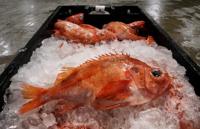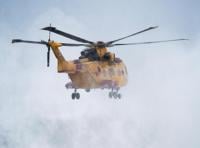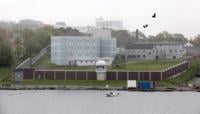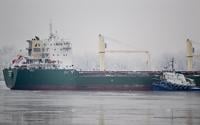HALIFAX - Following a decades-long moratorium on redfish, East Coast fishers are expected to begin harvesting the distinctive reddish-orange colored species later this month in the Gulf of St. Lawrence.
The federal Fisheries Department announced last week that the fishery, which has been closed since 1995, could reopen as early as June 15 with a total allowable catch of 60,000 tonnes for 2024-25.
Non-profit conservation group Oceana says while the reopening represents a new and “hopeful chapter” for the Atlantic fishery, it questions the new catch limit.
Rebecca Schijns, a fishery scientist with the group, said the new quota is much higher than the minimum allowable catch of 25,000 tonnes that was announced in January.
“If we are looking just at the redfish population the quota is relatively suitable for the biology of redfish,” Schijns said in an interview. “However, we are looking at a fishery that interacts with a number of very critically depleted stocks.”
Stock rebuilding efforts for species such as white hake, American place, winter flounder and Gulf cod could be affected by the redfish quota increase, she added.
“Redfish may be abundant now but there are many other species like cod and white hake that remain devastatingly depleted and they are found in a lot of the same areas and depths as redfish.”
Schijns believes the management plan for the fishery has some strong measures that will be critical in preventing overfishing, including onboard catch monitoring, a limit of one per cent for bycatch of depleted species with management plans and gear restrictions.
By contrast, Jason Spingle, secretary-treasurer for the Fish, Food and Allied Workers union in Newfoundland and Labrador, says the inshore fishers his union represents believe the new quota level is “conservative” given the amount of fish estimated to be in the Gulf. The most recent estimates have placed the so-called biomass of redfish at about 2.5 million tonnes.
About 15 per cent of the quota has been allocated to coastal and inshore vessels less than 20-metres in length, a share Spingle says is inequitable given that larger vessels of the offshore fleet received nearly 60 per cent. Shrimp and Indigenous fishers have each been given 10 per cent of the quota.
“There should be more of a balance there,” he said, adding the new rules are also seen as too restrictive.
“It’s just not going to allow a commercial fishery to occur,” said Spingle. “We are in a developmental stage and we’ve done a lot of work, but we need to do more work. It (the fishery) is too stringent without much flexibility.”
Complicating matters, he said, are low prices of 30 to 35 cents a pound for redfish and the high cost of fuel which he believes will leave inshore fishers with “little benefit” given their relatively smaller catch limits.
“We’re saying hit the brakes, let’s get a smaller (industry) working group together and let’s work something out,” he said.
Spingle and Schijns both agree there is also market uncertainty because of the smaller size of redfish currently in the Gulf.
Canada has a minimum catch size of around 22 centimetres in length, although before stocks collapsed in 1995 the fish had reached lengths of 35 to 40 centimetres or more. Currently the redfish are generally 30 centimetres or under in size.
The spiny hard jawed fish sometimes called “ocean perch” produce a light-colored filet that has been traditionally popular in U.S. and Asian markets. The fish are also used as bait by lobster, crab and other shellfish fisheries.
Schijns said there will have to be a certain amount of patience as the remounted fishery finds its footing.
“There are different circumstances than in the past and the economic benefits are uncertain,” she said. “Being adaptable is key and the best we can do right now is to get the management system working for as many people as possible.”
This report by Ďă¸ŰÁůşĎ˛ĘąŇĹĆ×ĘÁĎ was first published June 8, 2024.








































